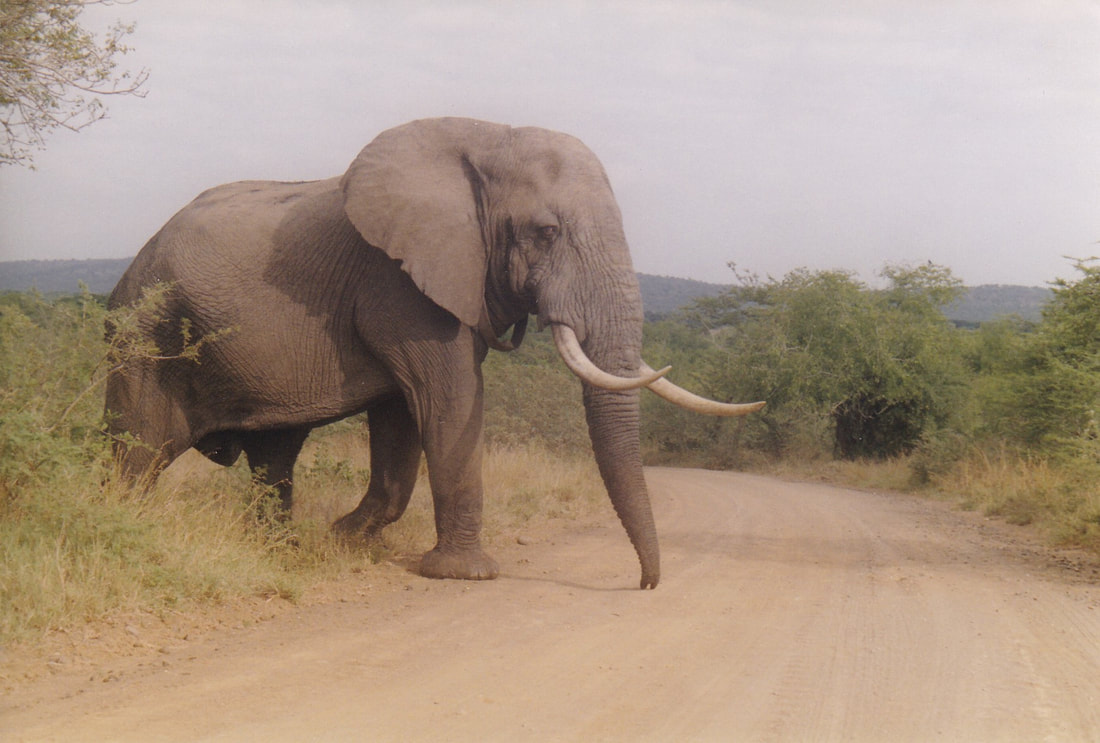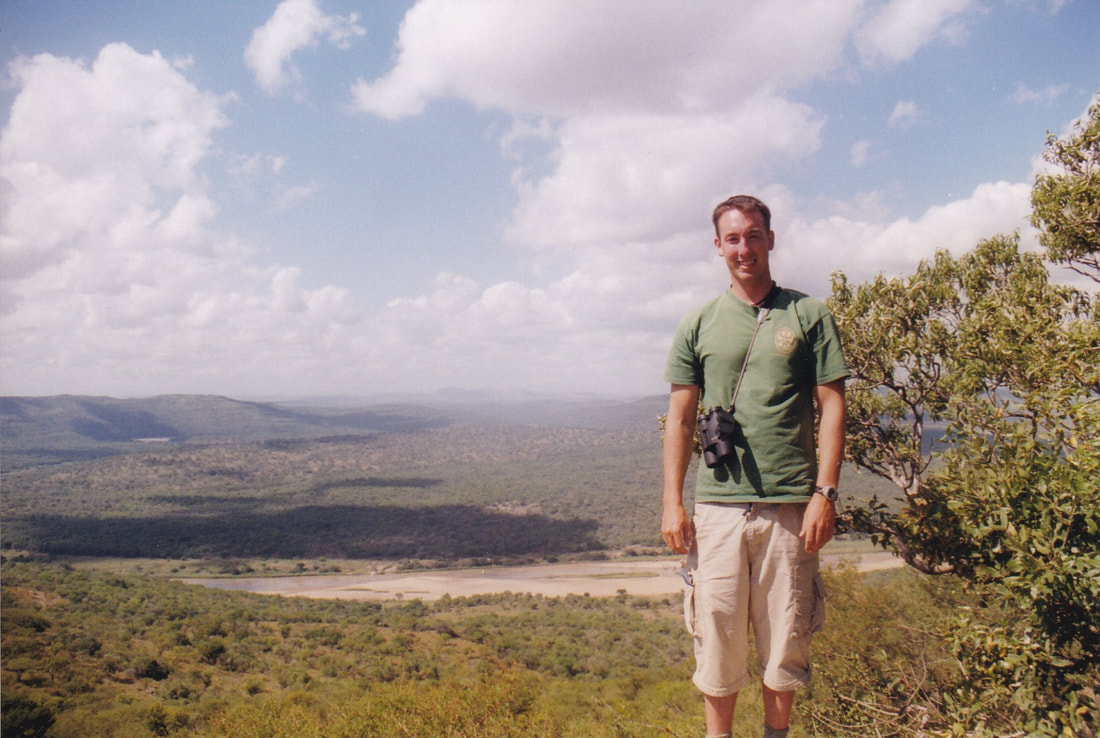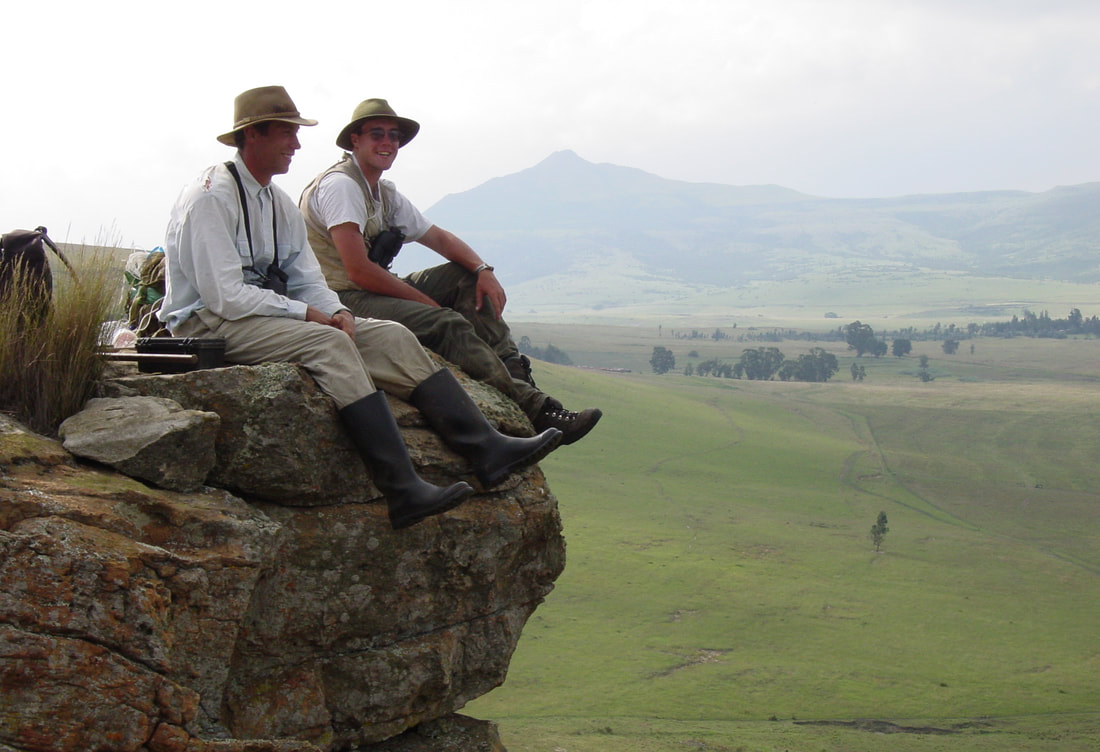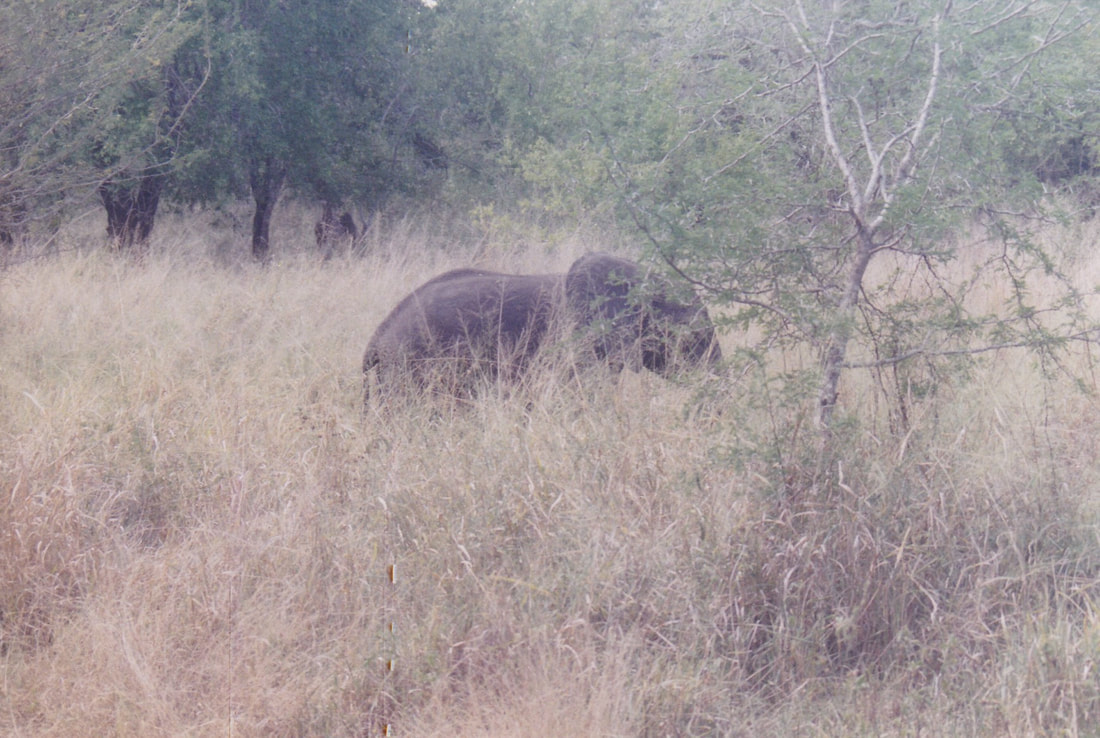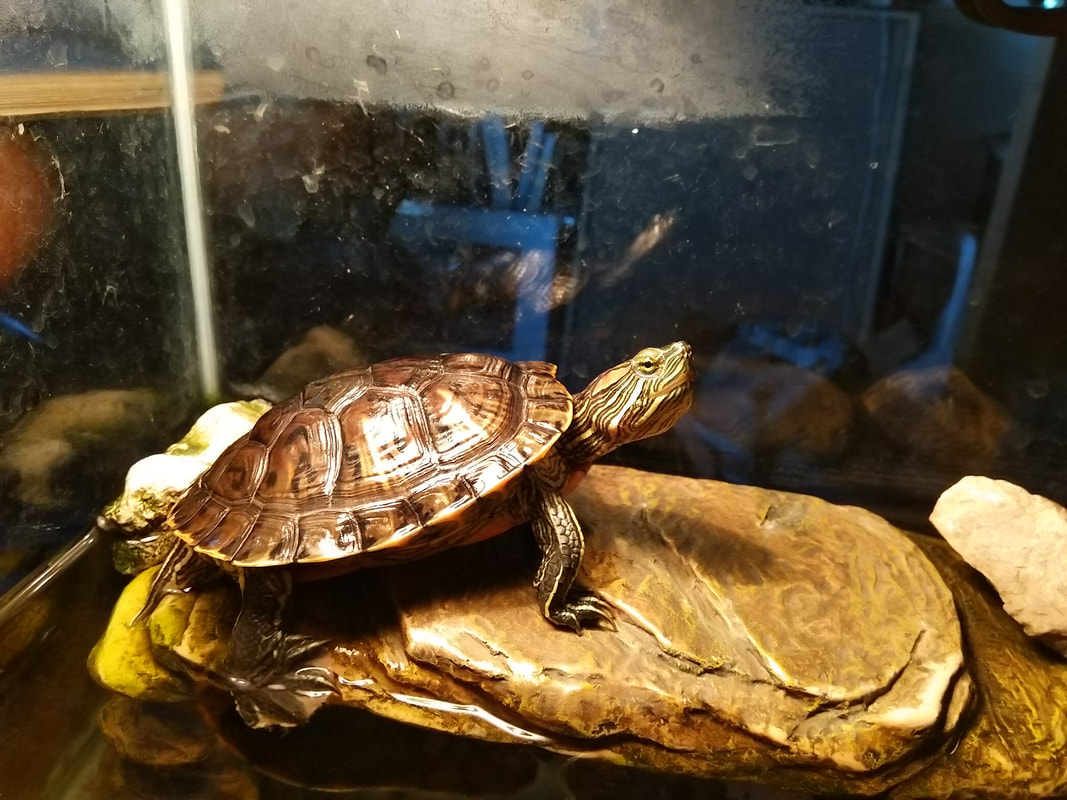|
* The next few posts will deviate a little from my normal format, and represent a bit of nature travel escapism for those of us feeling a bit cooped up these days. Elephants are intelligent, caring, and intuitive animals that also happen to be strong enough to rip a tree from the ground and knock it around like it were a stalk of grass. I think it can be hard to appreciate the full potential of power, and the capacity for destruction that an elephant is capable of until you have looked into the eyes of an angry mother elephant from inside an imminently crushable Toyota Corolla. I found myself in just such a position almost 18 year ago to the day when I was on a self-driving tour through some of South Africa’s game reserves with two compatriots. Justin, a Cornell graduate student whom I was working for as a research assistant on this trip, was behind the wheel of our parked tin can, and Ben, another research assistant on the project, was in the back. None of us spoke or moved as the massive animal bore down on us. My camera sat useless in my lap, and I gripped the door handle with my left hand, ready to spring from the car when the stomping began. Unfortunately, there were five other elephants flanking the leader, and I figured my odds of outmaneuvering all of them lay somewhere between “unlikely” and “not a snowball’s chance in hell.” So, how did it come to pass that three young men from the states had managed to so thoroughly enrage a mother elephant? The answer to this question is multi-tiered, and I will begin with the most immediate component. While touring around the excellent Hluhlewe-iMfolozi (“sh-shoo-lee im-ful-ozi”) game reserve, we had inadvertently positioned ourselves between a young elephant and its mother. To be fair, when we stopped the car and turned it off, we thought we were a safe distance from the herd of elephants that was loosely scattered among the trees on either side of the dirt road. It wasn’t until I had pulled myself out through the window, which I was using as a seat to photograph the closest elephants, that I realized there was a rather small member of the herd tucked into a shrub thicket just off to our right. I looked around for the mother, knowing that a baby this small would not be left to its own devices for long. I could see no adult in the nearby vicinity, but when I swung around to look behind me, the picture changed quickly. A group of six elephants was foraging on shrubs about 100 meters off to our left, and just as the question of whether one of these was the mother was forming in my head, the biggest of the bunch looked up. Now, some would might consider me guilty of anthropomorphizing here, but when the mother elephant saw us situated between her and the baby (in clear violation of the number one rule in nature, namely to never get between a mother elephant and her baby), I could see the following emotions cross her face; realization, then alarm, then anger. This all happened in a flash, and by the time my brain had processed what was happening, the group of six pachyderms had begun running towards us. I alerted my friends to the situation, slid back in through the open window, and began rolling the window up as fast as I could turn the crank. In my mind, I had a clear vision of what would happen if I didn’t get the window up; one of the elephants would come around to my side, reach its trunk in through the open window, pull me from the car, and mash my head into the ground to teach me some manners. Luckily, by the time the lead elephant was within 10 feet of the car I had managed to get the window about ¾ of the way up, which I figured was high enough to at least make it a sporting challenge for the elephant to extract me. With the window mostly closed, and the elephant now within spitting distance, the three of us in the car froze. Some animals are inscrutable when it comes to deciphering their emotional state; for example, my turtle Spudley may get more animated when he’s searching for food pellets, but most of the time I have a hard time discerning exactly what’s going on in his head based on his facial expressions. His state of being is generally one of the following: asleep, awake, eating, hiding. Elephants, on the other hand, leave little room for misinterpretation, especially when it comes to anger. And in this case, the lead (and largest) elephant was making her emotional state abundantly clear to us. She and the rest of her crew were now on the dirt road with us, kicking up small dust clouds as they hurried towards our car, ears flaring, and trunks going up and down (I imagined they was showing us what they would soon be doing with our limp bodies). The lead elephant (clearly the matriarch of the bunch) walked to the front of the car, which seemed to barely reach her ankles, and glared at us through the windshield. She occupied the entirety of our view, and when the entirety of your view is 5 tons of tusked fury, you could be in trouble. There is a certain euphoria, however, that comes from knowing you will become famous because of the fantastical manner of your death (“Three Americans crushed by angry mother elephant they managed to royally tick off. Baby elephant ok.”), but that passed quickly. As the three of us in the car watched, helpless as packaged sardines, the matriarch raised her front foot and swung it backwards. There was only one logical conclusion to this act; she was going to turn our car, with us inside, into an elephant soccer ball. We braced for the impending impact, but to our surprise, it never came. Instead, she swung the foot forward and stopped it inches from the bumper. She put her foot back on the ground, gave us a few more ear flares and trunk raises, then with an air of disgust, she turned to the right, and went to collect her baby. We were about to breath a sigh of relief, but that would have to wait until the other five elephants had their turn walking just in front of the car, staring us down, and giving us equally disgusted looks of contempt, with some ear flapping and trunk action thrown in for good measure. We gave them a few minutes to put some distance between us, and then Justin turned the car on, and we proceeded with our safari. After we’d all had a nice change of pants, that is. This amazing encounter represents just one of many incredible adventures from my 8-month stint in Africa. But before I jump into more adventures, now seems like a good time to address the other question regarding what we were doing in Africa in the first place. Well, we were there on a research mission: to investigate aspects of a coevolutionary relationship between an avian brood parasite (the pin-tailed whydah) and one of its hosts (the common waxbill). 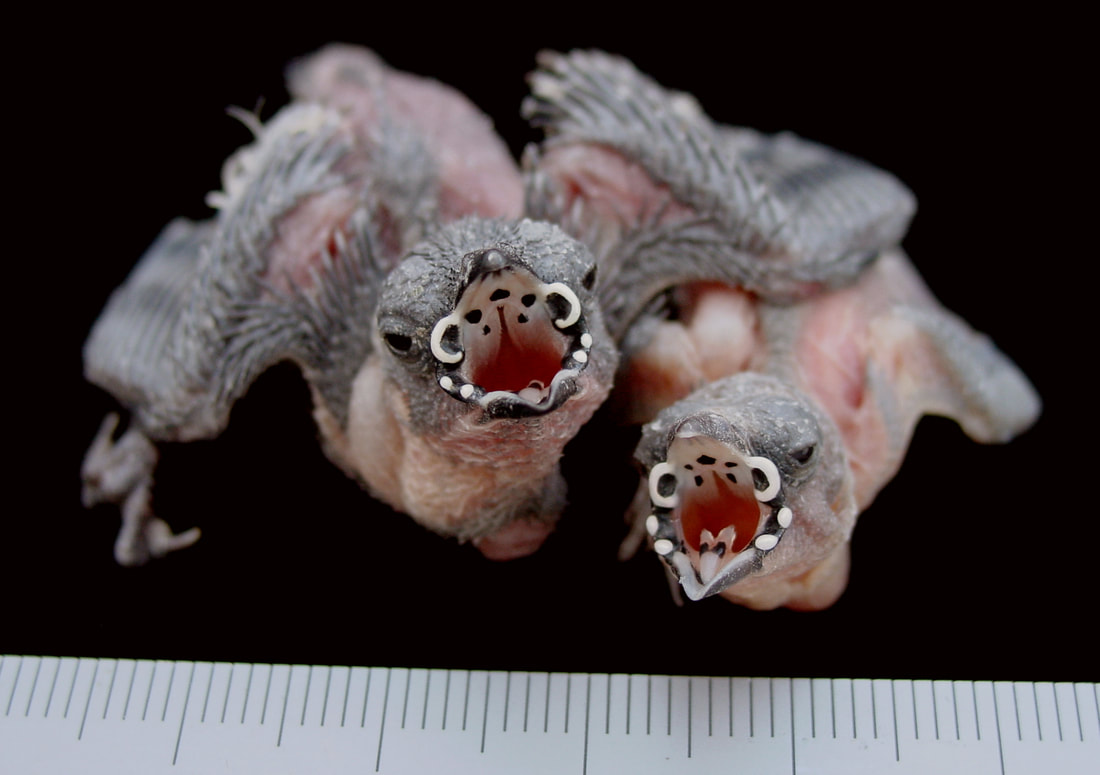 A Pin-tailed Whydah nestling on the left, and a Common Waxbill nestling on the right. These two nestlings came from the same waxbill nest, and show remarkably similar mouth markings. Is it due to mimicry on the part of the parasitic whydah? Is it convergence due to similar selective pressures of growing up inside a dark nest? We were there to find out. Image by Justin Schuetz. This was the crux of Justin’s Ph.D. research program, and he had recruited Ben and me months earlier for this intellectual adventure. Justin had been my TA for Ornithology, which I took during the fall of my senior year at Cornell. Sometime in the following spring (of 2001), he asked if I would be interested in helping him with his research, and once I found out that it would involve many months of living in Africa (both South Africa and Tanzania) I enthusiastically agreed. In late November of that year, a little over two months after 9/11 indelibly altered airline travel and what it meant to be an American journeying abroad, I boarded a plane in Boston and headed east.
My trip to South Africa took about 27 days. Actually, it only felt like 27 days. In reality it took about 2 days, and included an 11-hour layover at Heathrow Airport in London before an equally long flight down the length of the African continent. My 6.5-hour flight from Boston to Heathrow was relatively smooth, and even had a bit of luck thrown in for good measure. The woman seated to my right was clearly conjured up in a flight attendant’s nightmare, and she wasted no time in revealing this fact. She harangued the flight attendants almost constantly for the first 30 minutes, and when she wasn’t accosting them, she complained bitterly to me about whatever it was that was aggravating her. Luckily for me, one of those things was a malfunctioning headphone jack, and when she realized this, she became nearly apoplectic with frustration. She waylaid the nearest flight attendant and was summarily re-seated somewhere else that had a functioning headphone jack. Or she was tossed from the plane. In either case, it worked out beautifully for me. Once we arrived at Heathrow, I went to the luggage claim to collect my all my gear. Due to the lengthy duration of my layover, I had to grab all my checked bags and hold onto them until three hours before my next flight. That may not seem like a big deal, but in anticipation of my 8-months of field work, safaris, and travel, I had packed what one might call the opposite of light. And the prospect of being beholden to my bags for the next 8 hours didn’t sound overly enticing to me. So I gathered up my belongings, which consisted of an over-sized duffel bag (which could have comfortably held a baby blue whale), and two backpacks, and tossed the two big bags in a storage locker. Into a small backpack I stuffed my binoculars, a field guide to the birds of England, and some other odds and ends, and headed out to explore London. I spent an agreeable day exploring the city, dodging rain drops and hopping on and off the Tube (as the London underground is known). I kept my binoculars tucked away inside my backpack while I toured the National Gallery, Piccadilly Circus, and Trafalgar Square. But when I arrived at St. James Park, I came upon a large pond teeming with birds, and I finally pulled out the binoculars. At that stage in my life I was still a rather secretive bird watcher in public, so as I wandered through the park, looking at coots, moorhens, and an assortment of geese and ducks, I tried to be as discrete as one can be when peering through binoculars in a crowded city park. Luckily no-one called the Queen's Guard on me, or even seemed to notice me for that matter, and I was able to sneak around the park in peace. In the waning hours of the afternoon I made my way back to Heathrow, collected my belongings, and eventually got settled on the plane that would take me to South Africa and adventures unknown. I was due to arrive in Johannesburg in the morning, and Justin and Ben were supposed to meet me at my gate, or the luggage claim area. I remember nothing of that flight, but when I arrived, there was no Justin and Ben, so I went to the luggage claim and gathered by bags. Still no Justin and Ben. I exchanged some US dollars for South African Rand, and found a conspicuous location to sit and wait. As the minutes ticked by, my sense of unease mounted. I had no contacts in South Africa, no phone numbers, no easy way to communicate with anybody. You'll have to recall what it was like in 2001; the internet was still fairly novel, especially in places like South Africa, and getting in touch with folks was a bit more of a challenge. What would I do if they never showed? Wander the streets of Johannesburg, living inside my giant duffel bag? Fortunately, I never had to experience life as a human hermit crab, as Justin and Ben eventually appeared (they had been stuck in traffic), and helped me schlep my stuff to the little Toyota Corolla parked outside. We pulled out of the airport and headed southeast towards Pietermaritzburg and our new home in the pastoral valleys of the eastern midlands. Next Post-- Down in Africa: Part II.
0 Comments
Leave a Reply. |
About the author:Loren grew up in the wilds of Boston, Massachusetts, and honed his natural history skills in the urban backyard. He attended Cornell University for his undergraduate degree in Natural Resources, and received his PhD in Ecology from the University of California, Santa Barbara. He has traveled extensively, and in the past few years has developed an affliction for wildlife photography. Archives:
|
